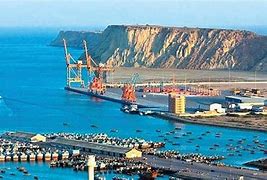According to a Financial Times report, Pakistan will receive 25 J-10C fighter jets from China in the next weeks, bolstering the country’s military’s ability to defend its airspace. Similarly, the first batch of combat aircraft is being tested in Chengdu, where the Chengdu Aerospace Corporation is based.
China will deliver 25 J-10C fighter jets to Pakistan within weeks in a major boost to the country’s military capabilities to defend airspace, UK’s Financial Times reported Saturday.
According to the report, the first batch of the combat aircraft is being tested in Chengdu, the base of its manufacturer Chengdu Aerospace Corporation.
“They will be transferred to Pakistan once Pakistan air force pilots and technicians have completed an introduction to the aircraft,” a journalist, working with a Chinese military publication, told FT.
Senior officials in Islamabad said the jets would be delivered before the end of the month, it added.
The images of the J-10C fighter jet with the marking of the Pakistan Air Force (PAF) recently emerged on social media and were widely circulated by media outlets.
Commenting on the matter, Chinese analysts have lauded the latest defence cooperation between the two countries, saying that the move yields great significance to them, in terms of boosting combat capabilities of the Pakistan military, promoting China’s aviation equipment, and responding to their security interests in the region.
First published on social media last week, the images show two J-10Cs, equipped with China’s domestically developed WS-10B Taihang turbofan engines, undertaking test flights at an undisclosed location.
“If confirmed, this could be the first time China has exported the J-10 series fighter and also the first time it has exported the WS-10 series engine,” observers said.
“The J-10C will significantly enhance the combat capabilities of the Pakistan Air Force,” Chinese analysts told Global Times.
“The J-10C is a 4.5-generation medium-size fighter jet and is more powerful than the China-Pakistan jointly developed lightweight fighter jet, the JF-17, which is currently in service with the Pakistan Air Force,” Shi Hong, Executive Chief Editor of the Chinese magazine, Shipborne Weapons, told the Global Times.
“The J-10C is larger and can be equipped with a bigger active electronically scanned array (AESA) radar than the one used by the JF-17 Block 3,” Shi said, noting that the J-10C can also carry more advanced, fourth-generation air-to-air missiles including the short-range PL-10 and the beyond-visual-range PL-15.
“The J-10C is also significantly more powerful than the old US-made F-16 fighter jet of the Pakistan Air Force and can rival the Rafale fighter jet that recently entered service with the Indian Air Force,” Shi said.
“Pakistan’s J-10C will not replace the JF-17, but form a combination, leading to higher combat capabilities,” Shi said.
In addition to the J-10C, Pakistan’s other military branches have also recently commissioned advanced Chinese equipment. For example, the navy received the first Type 054A/P frigate, and the army acquired the HQ-9/P air defence missile system, according to media reports.
“This demonstrates that defence cooperation between China and Pakistan is going even wider and deeper, and the large-scale adaptation of Chinese equipment by all Pakistani military services will significantly boost their combat capabilities,” Shi said, noting that a simple system with most Chinese hardware can also be supply chain friendly.
To China, the first successful sale of the J-10 series fighter and the WS-10 series engine will further open the international market and more countries will show serious interests in Chinese aviation equipment, analysts said.
“Pakistan’s procurement of the J-10C is also meaningful for China and Pakistan as a more powerful Pakistan military can better safeguard the shared interests of the two countries in the region,” Shi said.
















